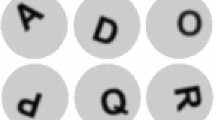Abstract
An object shape analysis is a problem that is related to such areas as geometry, topology, image processing and machine learning. For analyzing the form, the deformation between the source and terminal form of the object is estimated. The most used form analysis model is the Large Deformation Diffeomorphic Metric Mapping (LDDMM) model. The LDDMM model can be supplemented with functional non-geometric information about objects (volume, color, formation time). The paper considers algorithms for constructing sets of barcodes for comparing diffeomorphic images, which are real values taken by persistent homology. A distinctive feature of the use of persistent homology with respect to methods of algebraic topology is to obtain more information about the shape of the object. An important direction of the application of persistent homology is the study invariants of big data. A method based on persistent cohomology is proposed that combines persistent homology technologies with embedded non-geometric information presented as functions of simplicial complexes. The proposed structure of extended barcodes using cohomology increases the effectiveness of persistent homology methods. A modification of the Wasserstein method for finding the distance between images by introducing non-geometric information was proposed. The possibility of the formation of barcodes of images invariant to transformations of rotation, translation and similarity is considered.







Similar content being viewed by others
REFERENCES
Trouve, A. and Younes, L., Metamorphoses through Lie group action, Found. Comput. Math., 2005, vol. 5, no. 2, pp. 173–198.
Younes, L., Arrate, F., and Miller, M.I., Evolutions equations in computational anatomy, NeuroImage, 2009, vol. 45, no. 1, pp. 540–550.
Beg, M., Miller, M., Trouve, A., and Younes, L., Computing large deformation metric mappings via geodesic flows of diffeomorphisms, Int. J. Comput. Vision, 2005, vol. 61, no. 2, pp. 139–157.
Marsland, S. and McLachlan, R.I., A Hamiltonian particle method for diffeomorphic image registration, Biennial International Conference on Information Processing in Medical Imaging, 2006, pp. 396–407.
Carlsson, G., Topological pattern recognition for point cloud data, Acta Numer., 2014, vol. 23, pp. 289–368.
Hatcher, A., Algebraic Topology, Cambridge UP, 2002.
Leichter, S.V. and Chukanov, S.N., Matching of images based on their diffeomorphic mapping, Komp’uyt. Opt., 2018, vol. 42, no. 1, pp. 96–104.
Chukanov, S.N., Definitions of invariants for n-dimensional traced vector fields of dynamic systems Pattern Recognit. Image Anal., 2009, vol. 19, no. 2, pp. 303–305.
Chukanov, S.N. and Ul’yanov, D.V., Formation of invariants in the visualization of vector fields based on the construction of the homotopy operator, Komp’uyt. Opt., 2012, vol. 36, no. 4, pp. 622–626.
Chukanov, S.N., Constructing invariants for visualization of vector fields defined by integral curves of dynamic systems, Optoelectron. Instrum. Data Process., 2011, vol. 47, pp. 151–155.
Edelsbrunner, H. and Harer, J.L., Computational Topology: An Introduction, Providence, RI: Am. Math. Soc., 2010.
Garber, A., Edelsbrunner, H., Ivanov, A., Musin, O., and Nevskii, M., International Conference Geometry, Topology, and Applications, Model. Anal. Inf. Sist., 2013, vol. 20, no. 6, pp. 95–102.
Adams, H. and Tausz, A., JavaPlex Tutorial, 2011.
Duzhin, S.V. and Chebotarevsky, B.D., Transformation Groups for Beginners, American Mathematical Society, 2004.
Cang, Z. and Wei, G., Persistent cohomology for data with multicomponent heterogeneous information, 2018. http://gis-lab.info/qa/srtm.html.
De Silva, V., Morozov, D., and Vejdemo-Johansson, M., Persistent cohomology and circular coordinates, Discrete Comput. Geom., 2011, vol. 45, no. 4, pp. 737–759.
Chung, F.R.K. and Graham, F.C., Spectral Graph Theory, American Mathematical Society, 1997.
Funding
The work was funded by RFBR according to the research projects 18-07-00526 and 18-08-01284. The work was funded by the program of fundamental scientific researches of the SB RAS I.5.1, project 0314-2019-0020.
Author information
Authors and Affiliations
Corresponding author
Ethics declarations
CONFLICT OF INTEREST
The authors declare that they have no conflicts of interest.
ADDITIONAL INFORMATION
Sergey N. Chukanov, orcid.org/0000-0002-8106-9813, PhD.
About this article
Cite this article
Chukanov, S.N. The Comparison of Diffeomorphic Images based on the Construction of Persistent Homology. Aut. Control Comp. Sci. 54, 758–771 (2020). https://doi.org/10.3103/S0146411620070056
Received:
Revised:
Accepted:
Published:
Issue Date:
DOI: https://doi.org/10.3103/S0146411620070056




